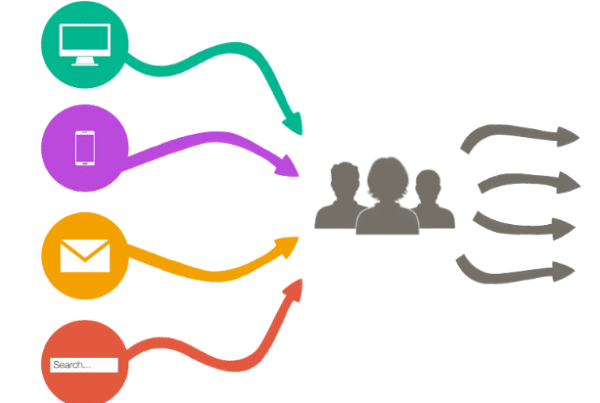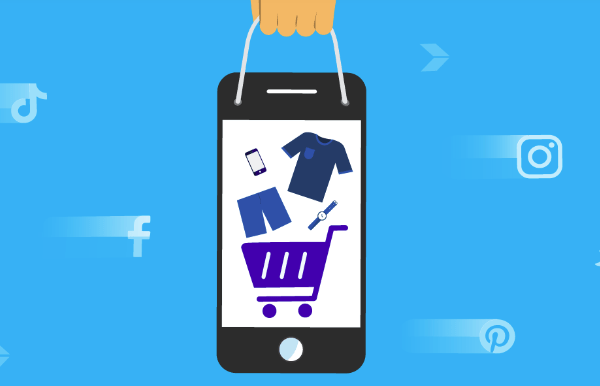Today on the ETREND interview series where we interview the industry’s leading experts we have Matthew Parisi, Director of Product Marketing for Tealium. We’ll be talking with Matthew about the growing conversation within first party vs. third party data and creating a strategy around that for e-commerce.
Mathew is a veteran cross-channel marketing leader championing a data-driven approach to marketing that has proven results across a broad range of industries, particularly SaaS. He is passionate about strategic positioning, messaging, and product marketing. He has managed programs consistently showing growth in revenue by employing innovative content marketing and lead generation strategies.
Privacy changes within the platforms are changing the landscape of advertising, thus, changing how businesses structure campaigns, data gathering, and more.
Q: Matthew, thanks so much for taking the time to do this interview with us. Let’s get to it. What is the biggest change to privacy affecting merchants you’ve seen? Is it the IOS14 change?
A: As far as a singular change, I would say 3rd party cookie deprecation is the biggest change to plan around. iOS 14 could very well be a bigger deal for certain businesses, but it ultimately depends on the specific business. Both are representative of a larger trend though around data becoming more scarce. Each are simply one vector of data deprecation overall. Collectively we refer to these forces as “signal loss†and there are a good number of trends conspiring, from regulations to tech changes to customer actions themselves, that lead to customer data being more scarce. Without access to the right data, ultimately it’s the customer experience that suffers and CX is everything.
Q: What actions have you seen retailers take to combat these type of changes that are coming from every large advertiser now?
A: The single most powerful way to address these changes is to develop a strong first-party data strategy. This also means having the technology to collect, manage and access that data. A lot of customer experience pros and marketers haven’t necessarily thought much about ‘data collection’ as a strategic imperative because ultimately you could easily get around it with easy access to 3rd party data through systems like a DMP. Many retailers are adopting CDPs as a key system to deepen their capabilities with first-party data.
Q: How would you best explain first party data vs. third party data, simply put?
A: First-party data is the data that comes from directly interacting with your customers. The data that comes from a customer browsing your website, using your mobile app, call your customer service department, etc. It’s extremely rich and accurate data. No one else has that data unless you’ve shared it. 3rd party data comes from a 3rd party (not you, not the customer, but some other entity), and it’s not a 1:1 trade. A 1:1 trade of data would be second-party data. 3rd party data is data that you would buy to improve your targeting, measure the results of a campaign you ran, etc. It could come from advertising companies, the government, market research, etc.
Q: How exactly can retailers use first party data within their digital marketing strategy?
A: First-party data is remarkably useful for digital marketing. Thinking about it along the customer journey, first-party data is great for developing lists of your best customers (whether they are the best because they purchase a lot, they purchase frequently, they purchase your highest margin items, etc.). These lists are great sources to use as the kernel for lookalikes.Â
Once the customer has made an initial purchase, first-party data is extremely powerful for loyalty, retention and customer experience efforts. It’s gold for personalization strategies— for example personalizing messaging based on products owned, last activities, behavioral affinities.
And lastly, it’s the fuel for customer insights. First-party data is really important for customer analytics projects and truly understanding the cross-channel behavior of your customers.
Q: What are some different ways to gather first party data?
A: I would highlight the concept of “value exchangeâ€. The higher the value of the data you are asking for from your customer, the higher the value you need to return to the customer for access to the insight represented by that data. The most common example of this you see are consent banners on websites. Basically, these consent banners ask for permission to track a customer in exchange for personalizing their experience (which most customers don’t value very highly). There are a lot of horrific examples of this in the market.Â
There are some great examples out there though. One of our customers, a global shoe manufacturer, has basically entered the fitness app business to gather better first-party data. They created a mobile app where shoe buyers can track their runs. Before, this brand had no direct relationship with customers….the customer would buy the shoe at the store and the shoe brand would never know anything other than a sale had occurred. Now, they know who purchased the shoe, how far they’ve run, when they might need a new pair, they have multiple opportunities during the week to engage with the customer, etc. It was game changing.
Q: Thy say cookies are a dying breed. What’s next?
A: They definitely are, though first-party cookies still have some use. The market is going to fragment, at least in the short term. Google already delayed the deprecation of 3rd party cookies for Chrome, which basically just created a longer headache that brands will need to address.Â
You’re seeing cookieless solutions come out using different identifiers, like email address. You’re seeing new approaches like FloC that use cohorts that Google was developing. And then you’re seeing renewed interest in some tactics that had fallen a little more out of favor, like contextual. I think ultimately what brands need to think about is how to have a system that allows them to work across all of these situations because nothing is set in stone and even when strategies are adopted, they can change quick.Â
I think that really mandates managing the data in a channel-agnostic way. You shouldn’t manage your data with a solution, a tool, or vendor that has an inherent interest in how you execute on that data.
Q: There’s growing talk about CDPs, (customer data platforms,) what exactly are they? Is this something retailers should be paying attention to?
A: Yeah, absolutely. CDPs were created to deal with the fragmented nature of customer data across an enterprise. They came on the scene recently, so were born to deal with the integration challenges that we see with Martech today. Many companies have built similar solutions using data lakes and enterprise data warehouses— basically unifying customer data all in one place and using that to personalize customer experience. However, for a lot of reasons, these don’t tend to be as successful as going the CDP route. But a CDP allows you to truly understand cross-channel customer behavior and then directly use that understanding as the foundation of how you engage your customer. And if you pick the right CDP, you can do that in real time.
Q: What is the one thing you would advise a retailer today to do first, above all, when it comes to the changes happening around privacy and gathering data to use in their marketing strategy?Â
A: Plan with privacy in mind from the start. It’s not something to worry about after you already have plotted a campaign. If you truly put the customer’s privacy interests at the heart of what you do with first-party data, and have a fair value exchange, you’re going to naturally make the decisions that lead to the best customer relationships, while also future-proofing your strategy.
Q: Can you share any examples of a first party data strategy to get the most of your customers from them being on your website and using that funnel marketing or site conversion optimization?
A: In my opinion, the coolest use cases come out of combining multiple pieces of technology and data sources to create experiences that are just surprisingly intelligent. CDPs go really well with a bunch of interesting technologies, like CRM, Multi-channel Marketing Hubs, Data Lakes and Warehouses, etc.Â
But, one of the more interesting combos is marrying a CDP with a digital experience tool like Contentsquare or Leanplum. Those tools are really good at identifying important moments in a customer’s experience. Then, when you join those moments with the deep understanding that comes as a result of managing your first-party, customer data really well with a CDP, you can basically replicate an in-person experience in the digital realm in an omnichannel fashion. CDPs allow you to activate those insights essentially across any channel so you can act with great understanding at precisely the right moment.
Q: Is there anything else you’d like to add about adapting a first party data marketing strategy for retailers and implementation? Also, let us know where readers can follow you.
A: If you haven’t historically had a first party data strategy or a tool to help you run, I would just say not to be scared of it and get started sooner than later. Understanding your customer through data, and being to act on that understanding is only becoming more important over time. Marketers and retailers have been in the business of understanding their customers, segmenting behavior and using insights for a long time. Don’t underestimate what you already know!
Feel free to connect with me on LinkedIn or check out the Tealium blog at tealium.com/blog for more content!Â
Thanks so much.


